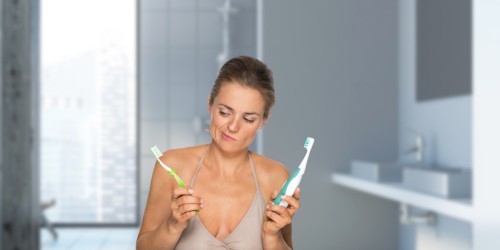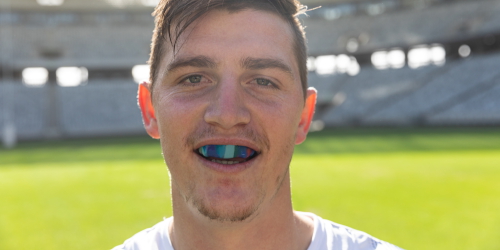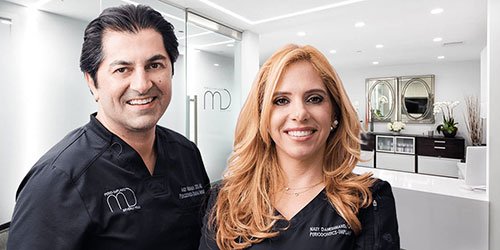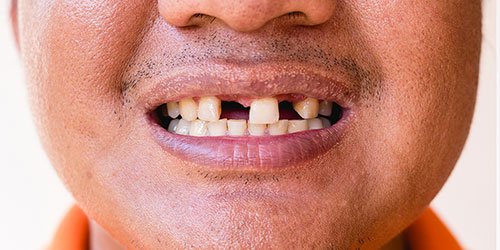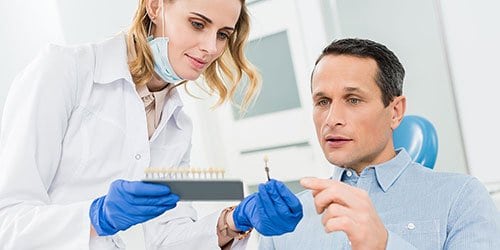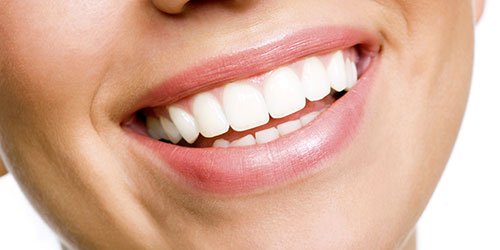What is Osseous Surgery (Pocket Reduction)?

According to the Oxford Dictionary of Dentistry, osseous surgery involves the removal or recontouring of damaged bone around the tooth as well as the removal of gum tissue that has been affected by advanced periodontal disease. Osseous Surgery is generally performed under local anesthetic.
The goal of this surgical procedure, says the American Academy of Periodontology, is to eliminate bacteria, reduce gum pockets that can harbor bacteria, and smooth out the damaged bone. This promotes gum tissue regeneration and reattachment to strong smooth bone.
Is osseous surgery really necessary?
It is when you have been diagnosed with periodontal disease with persistent deep pocketing after scaling and root planing (deep cleanings). It is a great treatment option for patients that have bacterial buildup in deep pockets that are non-responsive to non-surgical cleaning methods.

Periodontitis causes infection to form in the gum tissue and on the tooth root surface, and also for tartar and calculus (mineral deposits) to form on the tooth roots, causing erosion. As it worsens, periodontitis causes the gums to pull away from the teeth, creating “pockets” that can accumulate debris and bacteria between the teeth and gums.
Over time, as the bacteria spreads, these pockets will deepen, causing further bone loss and tissue damage to occur. Eventually, the tooth root can loosen, potentially resulting in tooth loss, requiring an extraction to remove the affected tooth root.

Reducing pocket depth and eliminating existing bacteria are important in preventing damage caused by the progression of periodontal disease and in helping you maintain a healthy smile. Eliminating bacteria alone may not be sufficient to prevent disease recurrence.
Deeper pockets are more difficult for you and your dental care professional to clean, so it’s important to keep them as small as possible. This, combined with daily oral hygiene and periodic professional maintenance care, increases your chances of keeping your natural teeth and decreases the chance of serious health problems associated with periodontal disease.
How is osseous surgery performed?
Up until recently, this procedure involved making a small incision in the gum and folding back a gum flap to get access to, and remove, the disease-causing bacteria before securing the gum flap back into place. If the underlying bone was damaged with plaque, tartar, and calculus build-up, these would be removed to limit areas where disease-causing bacteria can hide. Creating a smooth healthy bone surface would allow your gum tissue to reattach itself to the tooth root more effectively.
In addition to buffing out the bacterial biofilm and mineral build-up on your tooth, your periodontist would also perform what’s called debridement (or removal) of any diseased gum tissue lining the pocket surrounding the tooth. This is important not only for removing infected tissue but also for generating new healthy gum tissue that can reattach to your tooth root, eliminating the undesirable periodontal pocket (the gap between the gum and the tooth).
Attacking periodontal disease in its earliest stages is always the best bet for a good outcome.
MD Periodontics is one of a few select Los Angeles periodontists offering minimally invasive laser osseous surgery
Introducing the next generation of osseous surgery: using laser technology to make the procedure more comfortable for patients, more effective in eliminating bacteria, with fewer post-op complications, and faster wound healing. The Biolase dental laser is a safe and gentle alternative to traditional dental tools. It uses laser energy and water spray to perform procedures without the need for drilling, gum flaps, or anesthesia.
Clinical trials have shown that Biolase is not only more effective than manual tools for removing bacteria, inflamed gum tissue, and calculus build-up, it also promotes faster regeneration of new healthy bone and gum tissue. What’s more, Biolase also stimulates the new gum tissue to attach more effectively to the tooth root, thereby reducing the depth of gum pockets (which are the biggest culprits in gum disease).


What can you eat right after Osseous Surgery?
Semi-solid foods may be eaten as long as you can do so comfortably. Eggs, custard, yogurt, pasta, steamed vegetables, casseroles, and cooked cereals are some things that you might consider eating during the first two or three days following your surgery. Avoid spicy, salty, acidic, very hot, or very cold foods or liquids that can irritate your healing gums.
What to Expect After Osseous Surgery?
Immediately following the surgery, your periodontist will cover the area with gauze to absorb any bleeding. You will be given post-operative instructions, which will include rinsing your mouth with warm salt water and applying ice packs to reduce any swelling. You will need to change the gauze pads periodically as long as there is bleeding.
Is Osseous Surgery Painful?
Any discomfort can usually be handled with over-the-counter medications.
You may experience some swelling after this procedure, so applying an ice pack to the outside of your face over the treated area can help with discomfort. In some cases, antibiotics are given before, during, and after treatment in order to prevent infection.
Every surgery is different, but most of our patients are back in action and eating normally within a day or two. Your periodontist will want you to follow up in about a week to check the surgical area and ensure your mouth is healing properly.
After periodontal surgical procedures, you will most likely follow up in our office with more frequent preventative maintenance visits. You’ll have cleanings with our hygienist and make sure you are following a regular home care regimen. Performing your home care is essential for preventing any need for further osseous surgery.
Attacking periodontal disease in its earliest stages is always the best bet for a good outcome. But know that even in more advanced phases, osseous surgery may be the treatment that helps you preserve your natural teeth.
Why trust MD Perio for your Periodontal care?

The husband-and-wife team of Dr. Abdy Moshrefi, DDS, and Dr. Nazanin Daneshmand, DDS are two of the most trusted periodontists in Beverly Hills. Both are board-certified in periodontics and implantology and, between them, they have almost four decades of experience.
Backed by an expert team of dental professionals, MD Periodontics offers outstanding dental care in a state-of-the-art facility with a warm, welcoming family environment where our patients are truly treated like family.
To schedule an appointment, click here or call (310) 859-9449. Your smile (and gums) will thank you!
We are conveniently located to patients throughout Southern California and the Los Angeles area. Our Beverly Hills office is conveniently located near West Los Angeles, Culver City, West Hollywood, Downtown Los Angeles, Marina del Rey, Pacific Palisades, Malibu, Manhattan Beach, Sherman Oaks, and Encino.
 (310) 859-9449
(310) 859-9449 Pocket Reduction Surgery
Pocket Reduction Surgery
 or call us at
or call us at 













